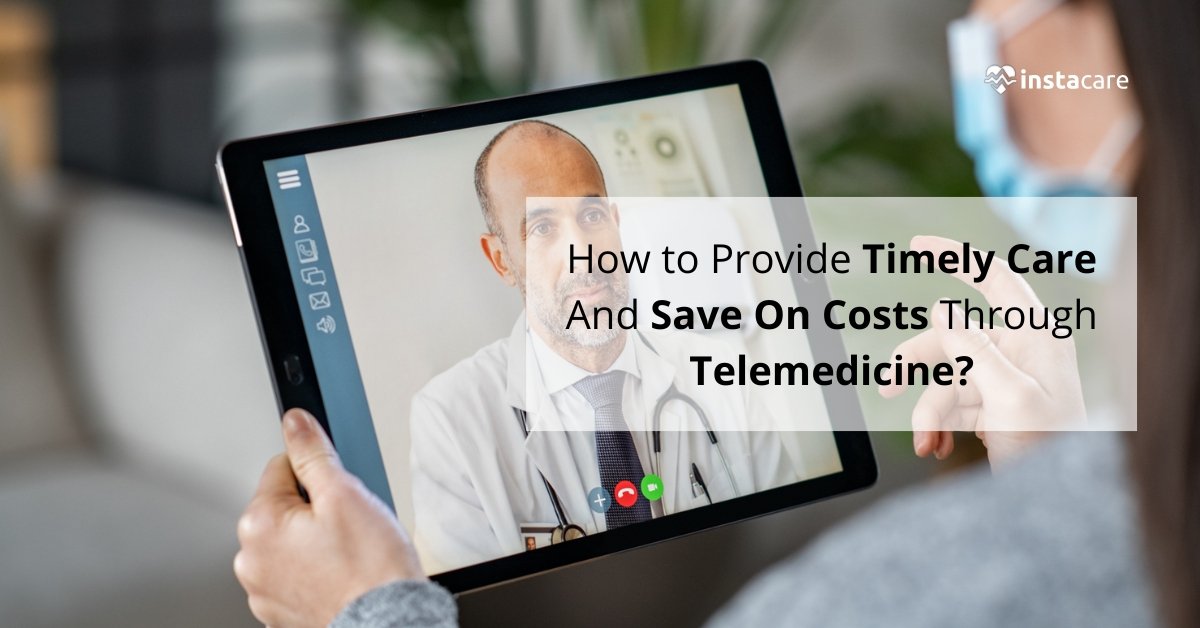Last updated on Tuesday, 8, April, 2025
Table of Contents
How to Provide Timely Care And Save On Costs Through Telemedicine?
Are you looking for ways to provide timely healthcare services and reduce costs? In recent years, telemedicine has emerged as an important tool for providing medical care in a convenient and cost-effective manner. From primary care physicians to specialists, clinics, hospitals and beyond, the use of telemedicine has enabled health providers to expand their reach while maintaining patient engagement and improving overall outcomes. In this blog post we will explore how remote healthcare technology can make a difference in your practice by cutting down on treatment time and reducing costs. By offering timely care through automated processes like virtual consultations, video visits or chatbots you are sure to improve your patients’ experience while saving precious resources!
Introducing the Benefits of Telemedicine
Telemedicine is a revolutionary health care delivery system that is fast gaining popularity among patients and doctors alike. With telemedicine, patients can now access remote medical care from the comfort of their homes, without having to worry about the long waiting times and the high cost associated with traditional office visits.
Thanks to telemedicine, patients living in remote areas or with mobility issues can also enjoy improved access to quality healthcare services. Additionally, telemedicine offers doctors the ability to improve patient outcomes, enhance their practice, and reduce overhead costs. With telemedicine, patients and doctors can communicate through video or phone calls, which allows doctors to diagnose, treat, and monitor their patients remotely. The benefits of telemedicine are numerous, and it is rapidly becoming an integral part of the healthcare delivery system.
Exploring The Cost-Savings of Telemedicine
Telemedicine has emerged as a cost-effective alternative to traditional healthcare in recent years. The use of telemedicine has shown significant results, reducing costs and saving time for both patients and healthcare providers. By connecting patients with their providers through telecommunication technology, healthcare services can be delivered remotely. Therefore, patients are no longer required to travel to medical facilities for routine checkups or appointments.
This shift has been crucial, especially in rural communities where access to medical facilities is limited. Additionally, telemedicine has been proven to reduce hospitalizations and readmissions, thus making the healthcare delivery system more efficient. These cost-saving benefits are making telemedicine an essential part of healthcare delivery systems around the world.
Understanding How Telemedicine Increases Access to Care
Telemedicine is revolutionizing the healthcare industry, expanding access to care for people who may have previously struggled to receive medical attention. With telemedicine, patients can connect with healthcare professionals remotely, using technology like video conferencing and messaging systems. This eliminates barriers to care caused by distance, transportation, and other obstacles, making healthcare more accessible than ever before.
Telemedicine is particularly useful in rural and remote areas, where access to care can be limited. It also provides a convenient and efficient option for patients with busy schedules or mobility issues who may find it difficult to attend in-person appointments. Overall, understanding the benefits of telemedicine can help us appreciate the vital role it plays in increasing access to care and improving health outcomes for patients.
View More: 5 Benefits Of Technology In Healthcare
Examining The Quality of Care Provided Through Telemedicine
As telemedicine continues to grow in popularity, it is becoming increasingly important to examine the quality of care patients are receiving through these virtual visits. While telemedicine offers convenient access to healthcare for those who may not be able to leave their homes or live far from medical facilities, it is crucial that the quality of care is not compromised. Studies have shown that telemedicine can offer comparable outcomes to traditional in-person care, but this does not mean that all telemedicine services are equal.
Ensuring that healthcare providers are following best practices and providing proper diagnoses and treatment is essential for maintaining the highest level of care possible. As the use of telemedicine continues to evolve, monitoring and evaluating its quality of care will remain a crucial aspect of its success.
Gaining Insight into Patient Satisfaction With Telemedicine
Telemedicine has revolutionized the way healthcare is delivered, especially in times of crisis. However, measuring patient satisfaction with this new approach can be challenging. That’s where gaining insight becomes paramount. By using both quantitative and qualitative data, healthcare providers can get a better understanding of their patient’s needs and preferences when it comes to telemedicine.
For example, surveys can pinpoint which areas of the virtual care appointment went well and which could be improved. Open-ended questions can also provide more in-depth feedback, allowing doctors and nurses to build a better relationship with their patients and improve the overall telemedicine experience. With the insights gathered, healthcare providers become better equipped to provide patient-centered care and tailor their services to suit the needs of their patients.
Reviewing The Regulatory Implications for Providers Using Telemedicine
Telemedicine is a rapidly growing field that continues to challenge traditional healthcare practices. While the benefits are significant, such as increased access to care for underserved communities and reduced healthcare costs, the regulatory implications for providers cannot be overlooked. Providers using telemedicine must navigate a complex landscape of federal and state laws, license requirements, and reimbursement policies.
Failure to comply with these regulations can result in penalties or even legal action. As telemedicine continues to revolutionize the healthcare industry, providers must stay up-to-date with the evolving regulatory landscape to ensure they are providing quality care while also protecting themselves and their patients.
Conclusion
Providing timely care through telemedicine has many undeniable benefits and can be the difference between life and death in some cases. It is a great way to save on costs while providing better access to health care, especially in rural areas where medical services may be limited or non-existent. Additionally, patients can avoid trips to the hospital as well as expensive emergency room visits – this not only saves them money but also precious time.
Telemedicine can prevent minor issues from becoming chronic conditions, ultimately improving patient wellbeing. With greater access to quality care, people who may have not considered seeking medical attention due to cost or geographic isolation now have the means available to do so. To sum up, telemedicine is an essential factor for delivering timely, effective healthcare in today’s world – one which is increasingly reliant on technology and cost efficient solutions.



